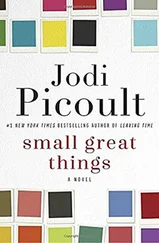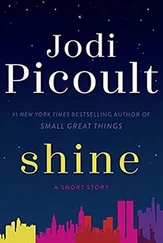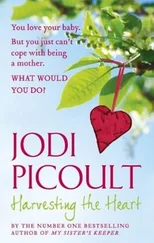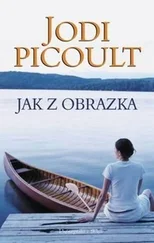Sean and Charlotte had chosen not to find out in advance. When parents told us that, we wrote it in their files. It had taken a Herculean effort for me to not peek during the ultrasound, so that I wouldn’t inadvertently give away the secret.
It was seven o’clock; the receptionist had gone home for the day; the patients were all gone. Charlotte had been allowed to wait for me only because everyone knew we were friends. “We wouldn’t have to tell him that we know,” I said.
“Know what?”
“The baby’s sex. Just because we missed the movie doesn’t mean we can’t catch another one…”
Charlotte’s eyes widened. “You mean an ultrasound?”
“Why not?” I shrugged.
“Is it safe?”
“Absolutely.” I grinned at her. “Come on, Charlotte. What have you got to lose?”
Five minutes later, we were in Janine’s ultrasound suite. Charlotte had hiked her shirt up beneath her bra, and her pants were pushed down low on her abdomen. I squirted gel onto her belly, and she squealed. “Sorry,” I said. “Cold.” Then I picked up the transducer and moved it over her skin.
The picture of you rose on the screen like a mermaid coming up to the water’s surface: black one moment, and then slowly solidifying into an image we could recognize. There was a head, a spine, your tiny hand.
I swept the transducer to a point between your legs. Instead of the crossed bones of a fetus cramped inside the womb, your soles touched each other, your legs practically forming a circle. The first break I saw was the femur. It was angulated, bent acutely, instead of being straight. On the tibia I could see a line of black, a new fracture.
“So?” Charlotte said happily, craning her neck to see the screen. “When do I get to see the family jewels?”
I swallowed, moving the transducer up to see the barrel of your chest and the beaded ribs. There were five healing fractures here.
The room started spinning around me. Still holding the transducer, I leaned forward, settling my head between my knees. “Piper?” Charlotte said, coming up on her elbows.
I had learned about osteogenesis imperfecta in medical school, but I had never actually seen a case. What I remembered about it were pictures of fetuses with in vitro fractures like yours. Fetuses that died at birth or shortly after.
“Piper?” Charlotte repeated. “Are you okay?”
Pulling myself upright, I drew in a deep breath. “Yes,” I said, my voice breaking. “But Charlotte…your daughter’s not.”
The very first time I heard the words osteogenesis imperfecta was after Piper drove Charlotte home, hysterical, from that off-the-cuff ultrasound in Piper’s office. With Charlotte sobbing in my arms, I tried to make sense of the words Piper was lobbing at me like missiles: collagen deficiency, bones angulated and thickened, beaded ribs. She had already called a colleague, Dr. Del Sol, who was a high-risk maternal-fetal-medicine physician at the hospital. We had an appointment for another ultrasound at 7:30 a.m.
I had just come home from work-a construction detail that had been hellish because it had rained the entire afternoon and evening. My hair was still damp from the shower, my shirt sticking to the damp skin of my back. Amelia was upstairs watching TV in our bedroom, and I had been holding a container of ice cream, eating right out of it with a spoon, when Piper and Charlotte came into the house. “Damn,” I said. “You caught me right in the act.” Then I realized that Charlotte was crying.
It never failed to amaze me how the most ordinary day could be catapulted into the extraordinary in the blink of an eye. Take the mother who was handing a toy to her toddler in the backseat one moment, and in a massive motor vehicle accident the next. Or the frat boy who was chugging a beer on the porch as we drove up to arrest him for sexually assaulting another student. The wife who opened the door to find a police officer bearing the news of her husband’s death. In my job, I’d often been present at the transition when the world as you knew it became the disaster you never expected-but I had not been on the receiving end before.
My throat felt like it had been lined with cotton. “How bad?”
Piper looked away. “I don’t know.”
“This osteopatho-”
“Osteogenesis imperfecta.”
“How do you fix it?”
Charlotte had drawn back from me, her face swollen, her eyes red. “We can’t,” she said.
That night, after Piper had left and Charlotte had finally fallen into a fitful sleep, I got on the Internet and Googled OI. There were four types, plus three more that had recently been identified, but only two of them showed fractures in utero. Type II infants would die before birth, or shortly after. Type III infants would survive but could have rib fractures that caused life-threatening breathing problems. Bone abnormalities would get worse and worse. These children might never walk.
Other words started jumping off the screen:
Wormian bones. Codfish vertebrae. Intramedullary rodding.
Short stature-some people grow only three feet tall.
Scoliosis . Hearing loss.
Respiratory failure is the most frequent cause of death, followed by accidental trauma.
Because OI is a genetic condition, it has no cure.
And
When diagnosed in utero, the majority of these pregnancies end in pregnancy interruption.
Below this was a photograph of a dead infant who’d had Type II OI. I could not tear my eyes away from the knotted legs, the shifted torso. Was this what our baby looked like? If so, wasn’t it better to be stillborn?
At that thought, I squeezed my eyes shut, and prayed to God that He hadn’t been listening. I would have loved you if you’d been born with seven heads and a tail. I would have loved you if you never drew breath or opened your eyes to see me. I already loved you; that didn’t stop just because there was something wrong with the way your bones were made.
I quickly cleared the search history so that Charlotte wouldn’t accidentally bring up the photograph when she was surfing the Net, and moved upstairs quietly. I stripped in the dark and slid into bed beside your mother. When I wrapped my arms around her, she shifted closer to me. I let my hand fall over the swell of her belly just as you kicked, as if to tell me not to worry, not to believe a word I read.
The next day, after another ultrasound and an X-ray, Dr. Gianna Del Sol met us in her office to go over the report. “The ultrasound showed a demineralized skull,” she explained. “Her long bones are three standard deviations off the mean, and they’re angulated and thickened in a way that shows both healing fractures and new ones. The X-ray gave us a better picture of the rib fractures. All of this indicates that your baby has osteogenesis imperfecta.”
I felt Charlotte’s hand slip underneath mine.
“Based on the fact that we’re seeing multiple fractures, it seems like we’re talking about Type II or Type III.”
“Is one worse than the other?” Charlotte asked. I looked into my lap, because I already knew the answer to that.
“Type IIs normally do not survive after birth. Type IIIs have significant disabilities and sometimes early mortality.”
Charlotte burst into tears again; Dr. Del Sol passed her a box of tissues.
“It’s very hard to tell whether an infant has Type II or Type III. Type II can sometimes be diagnosed by ultrasound at sixteen weeks, Type III at eighteen. But every case is different, and your earlier ultrasound didn’t reveal any fractures. Because of that, we can’t give you an entirely accurate prognosis-beyond the fact that the best-case scenario is going to be severe, and the worst case will be lethal.”
Читать дальше












